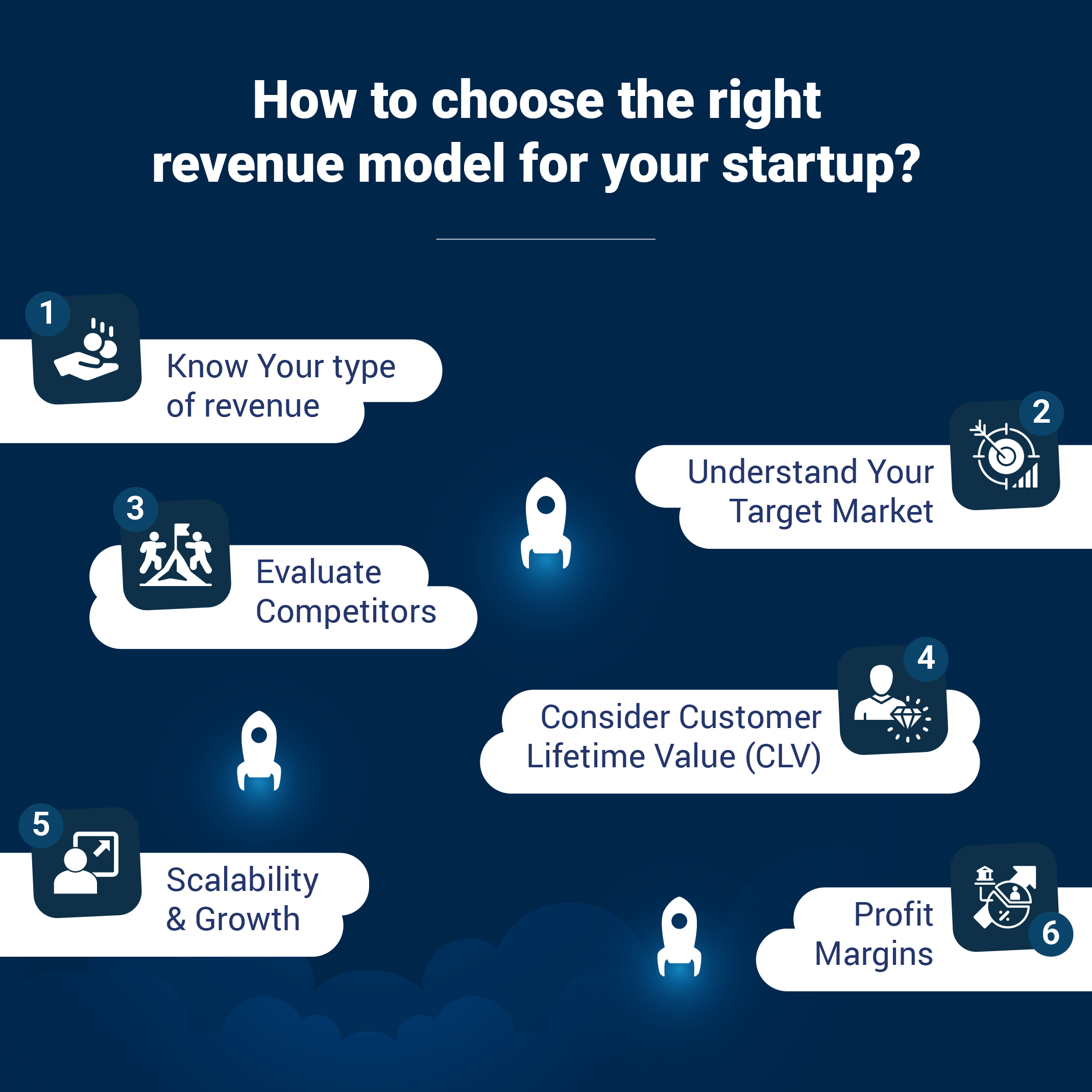Choosing the right revenue model for your start-up is vital. It is akin to a receipt, which gets translated into profits once you implement it. In today’s fast-changing world of business, where trend shifts and strategies change overnight, going back to tried, tested, and trusted revenue models can be a savior for many start-ups when their sales start declining.
A revenue model is how your business makes money. It is not merely a strategy; it forms the lifeline of your entrepreneurial venture, enabling you to create an impact and sustain its momentum. A good revenue model describes how income will be generated, its sources, and how this cash flow will continue.
The right revenue model is crucial because it directly impacts your business's ability to sustain and grow. It influences every aspect of your entrepreneurial venture, from your pricing strategy to your sales channels and even how you engage with customers.
Get it right, and you’re on your way to building a profitable, sustainable business. Get it wrong, and you might find yourself scrambling to stay afloat.
Exploring the 7 different revenue models for startups
Let us look at some of the most common revenue models chosen by businesses in India:
1. Franchise model
In the franchise model, a business allows others to operate under its brand name and business structure in exchange for a fee or royalty. This model is popular because it enables rapid expansion with minimal capital investment from the franchisor.
Example: DTDC, one of the oldest courier services headquartered in Mumbai, is one of the most famous franchises operating in India. Through the franchise model, DTDC expanded its business reach to meet increasing demand and got access to more space to store shipments.
2. Leasing model
The leasing model involves renting out assets or products to customers for a specific period. This model generates a steady stream of income without selling the asset outright, making it ideal for companies with high-value items.
Example: Ola offers car leases to drivers, allowing them to pay a monthly fee to use the vehicle instead of purchasing it outright. This model lowers the entry barrier for drivers and ensures a steady revenue stream for Ola.
3. Direct Sales Model
The direct sales model is a traditional approach where companies sell their products or services directly to customers, either online or offline. This model allows businesses to control the customer experience and retain higher profit margins.
Example: Tata Motors employs the direct sales model by selling vehicles through its extensive dealership network across India, ensuring a strong brand presence and customer loyalty.
4. Subscription model
In the subscription model, customers pay a recurring fee to access a product or service, typically on a monthly or yearly basis. This model provides predictable revenue and fosters customer loyalty.
Example: Zomato Gold offers a subscription service that gives customers exclusive benefits at partner restaurants. This model ensures recurring revenue and builds a loyal customer base.
5. Commission-based model
The commission-based model involves earning a percentage of the transaction value when connecting buyers and sellers. It’s particularly effective for marketplace businesses that facilitate numerous transactions.
Example: Flipkart operates on a commission-based model, earning a percentage from each sale made by sellers on its platform. This model is scalable and highly profitable as the marketplace grows.
6. Freemium model
In the freemium model, a business offers basic services for free while charging for premium features. This model helps acquire a large user base, which can be gradually converted into paying customers.
Example: Zoho offers a suite of productivity tools with basic features available for free. Users who need advanced functionalities can opt for a paid subscription, creating a steady revenue stream.
7. Advertising model
The advertising model generates revenue by offering free content or services while charging advertisers for exposure to the audience. This model works well for businesses with large user bases.
Example: The Times of India leverages the advertising model, providing free news content while earning revenue from advertisers who want to reach its vast readership.
Choosing the right revenue model
Choosing the right revenue model is like choosing the right recipe for your business. It’s not just about what looks good on paper — it’s about what will sustain and grow your start-up in the long run.
By understanding your options, studying your competition, testing different models, and staying flexible, you can find the revenue model that fits your business like a glove. Remember, your revenue model is the circulatory system of your business — get it right, and you’ll pave the way for long-term success.
To start with you can opt for a model that feels achievable, wherein you can experiment, and adapt as you learn from your market.

Adjusting your revenue model over time
Your revenue model isn’t set in stone. As your business grows and the market changes, you must adapt. Maybe your customers are asking for features that don’t fit your current model, or a new competitor has entered the market with a more appealing product/service. Stay flexible and be willing to swing if required.
For example, one of the most successful franchise models in India is Domino’s Pizza, operated by Jubilant FoodWorks. The franchise model has allowed Domino’s to expand rapidly across India, ensuring consistent quality and customer experience while enabling local entrepreneurs to operate individual outlets.
Also, Adobe shifted from a direct sales model (selling software as a one-time purchase) to a subscription model (Adobe Creative Cloud). This change allowed them to generate a steady income stream and stay competitive in a rapidly evolving industry.
The right revenue model ensures long term growth of your business. Each model offers unique benefits, from the predictable cash flow of subscription models to the flexibility of pay-per-use. While choosing the perfect fit for your business, keep in mind the value you bring to your customers and how each model contributes to your vision for growth.
Pivoting or Blending Revenue Models: When & How to Evolve
For startups and growing businesses, sticking to a single revenue model isn’t always sustainable. As markets shift and customer preferences evolve, you may need to pivot or blend revenue models to stay competitive and profitable.
When to Pivot or Combine Revenue Models
-
Growth Stagnation: If revenue growth has plateaued, exploring new income streams can reignite growth.
-
Market Feedback: Customer demand for different pricing structures or features may signal the need to adapt.
-
Competitive Pressure: If competitors are succeeding with alternative models, it may be time to reconsider your approach.
-
New Opportunities: Emerging technologies or partnerships may open doors for diversified monetization.
How to Blend Revenue Models Effectively
-
Start with Experimentation: Test new models on a small scale before a full rollout.
-
Align with Customer Needs: Ensure the added revenue streams (like freemium + ads or subscriptions + premium features) enhance, not complicate, the user experience.
-
Monitor Metrics Closely: Track performance KPIs to ensure the new model is profitable and sustainable.
- Maintain Brand Consistency: Avoid confusing customers with too many pricing options — clarity is key.
Example: Spotify blends freemium access supported by ads with paid subscriptions, appealing to different user segments effectively.
Wrapping Up
In business, what works today may not work tomorrow. That’s why flexibility and continuous testing are essential. Startups should regularly revisit their revenue models to adapt to market changes, customer feedback, and growth phases.
The most successful companies don’t just build great products — they evolve their monetization strategies in sync with their audience and industry trends.















